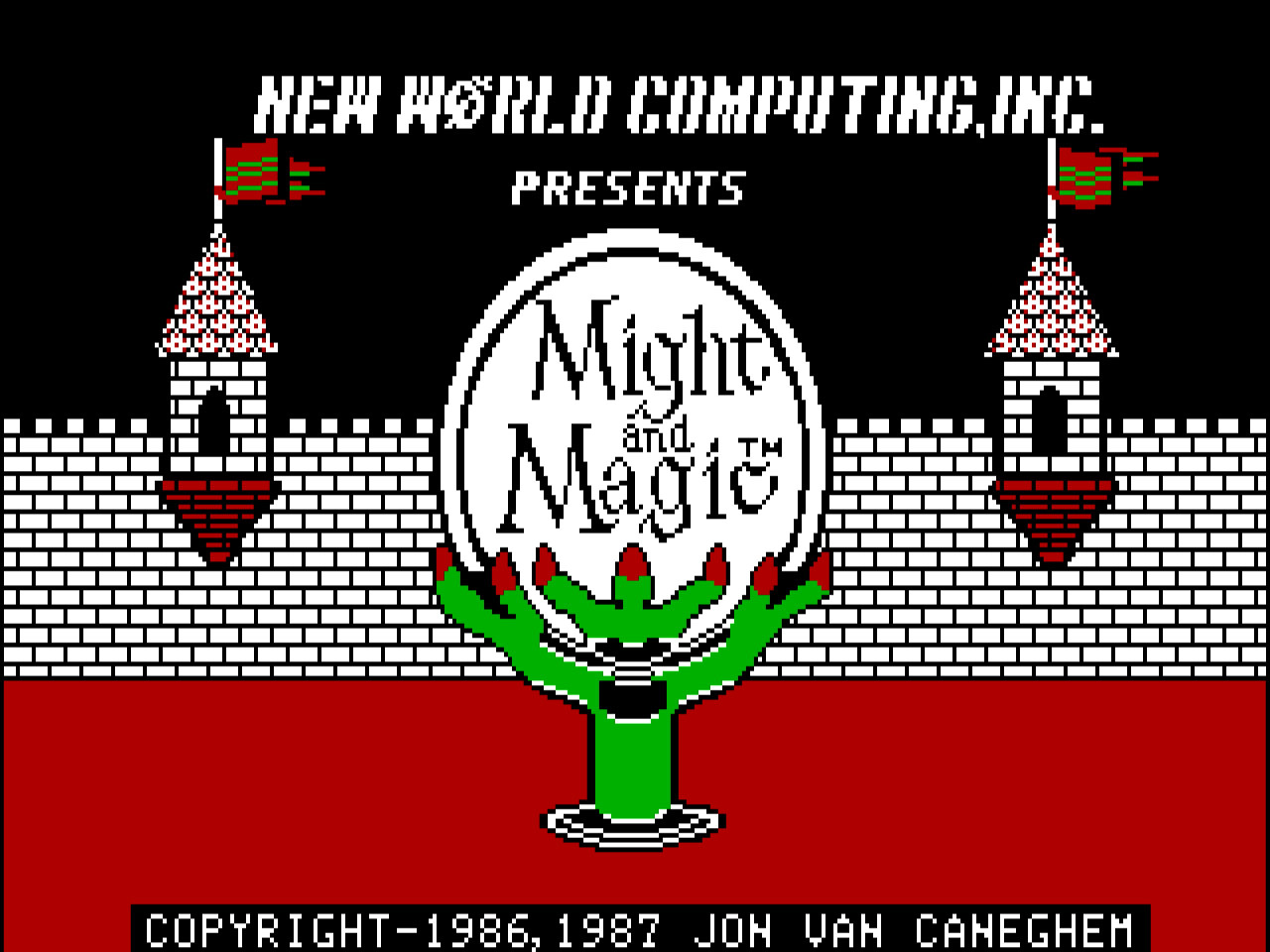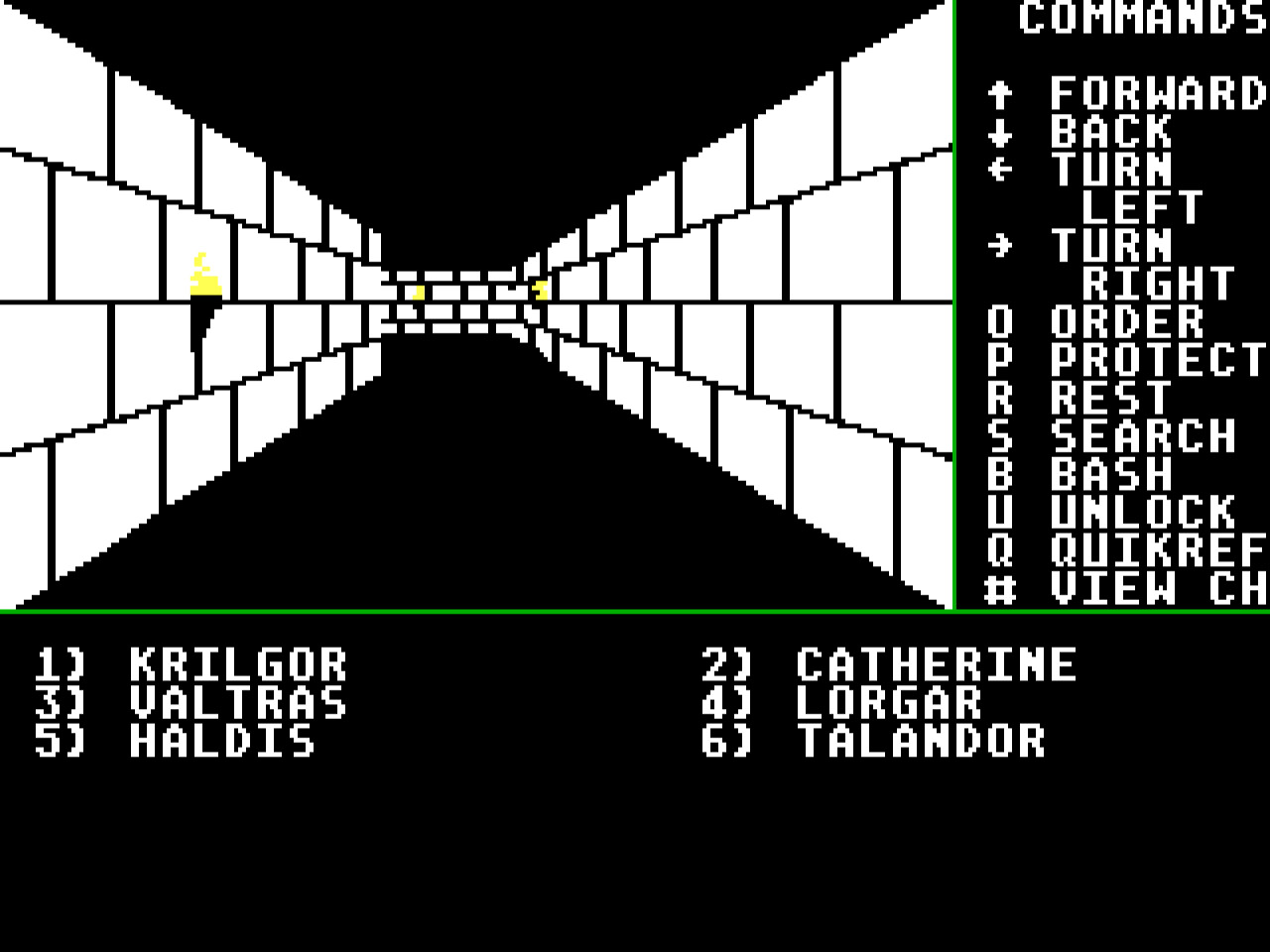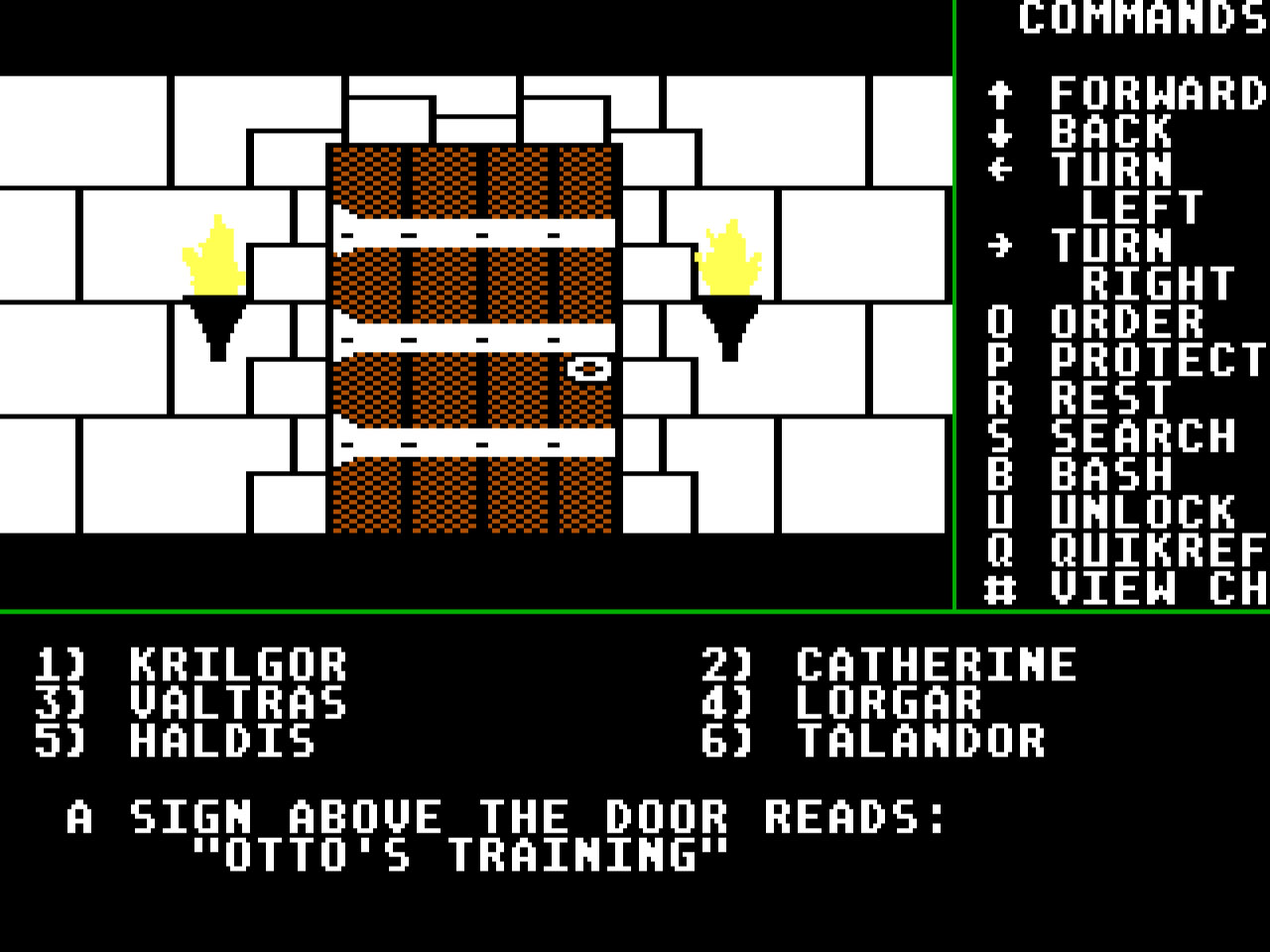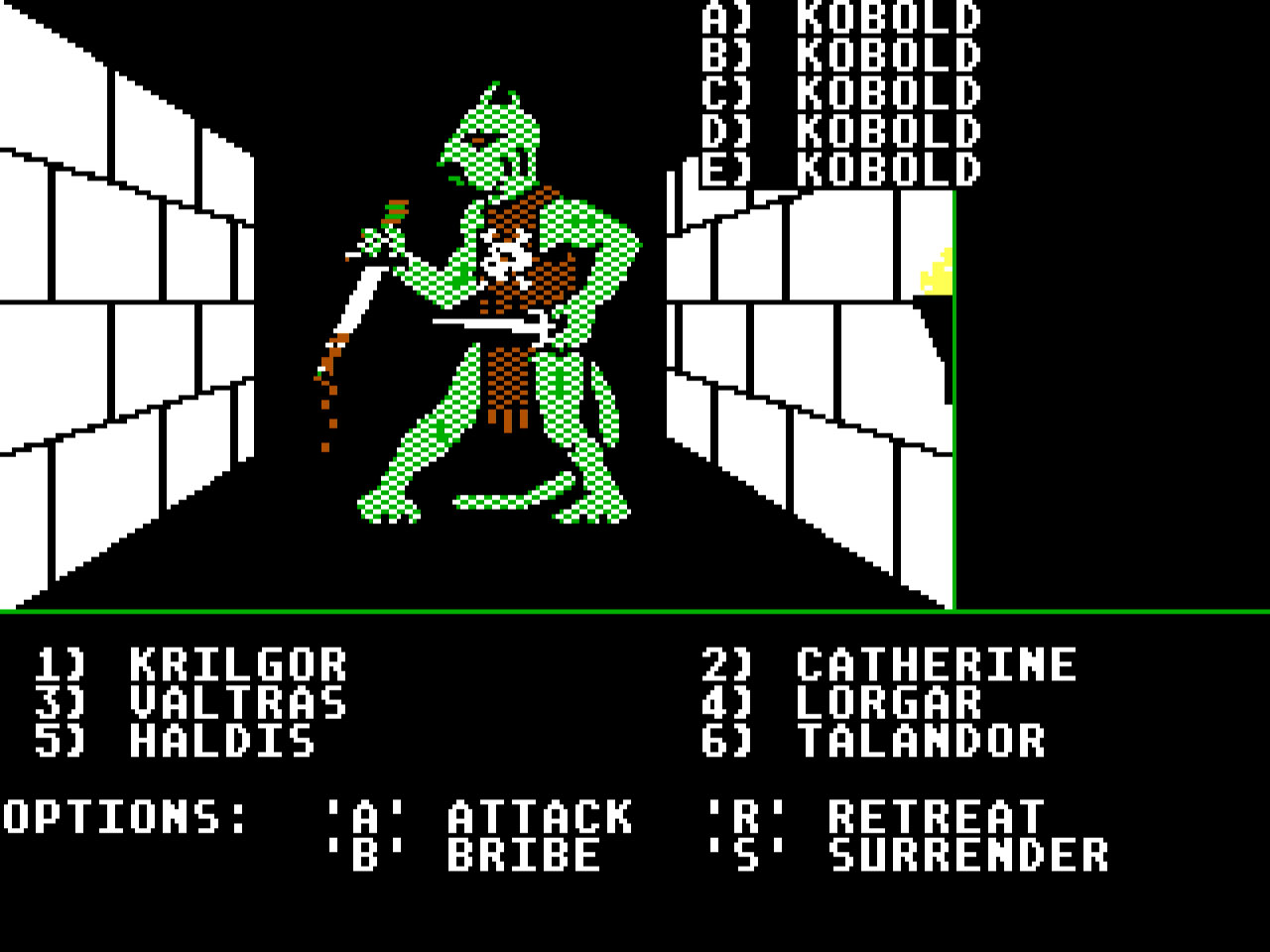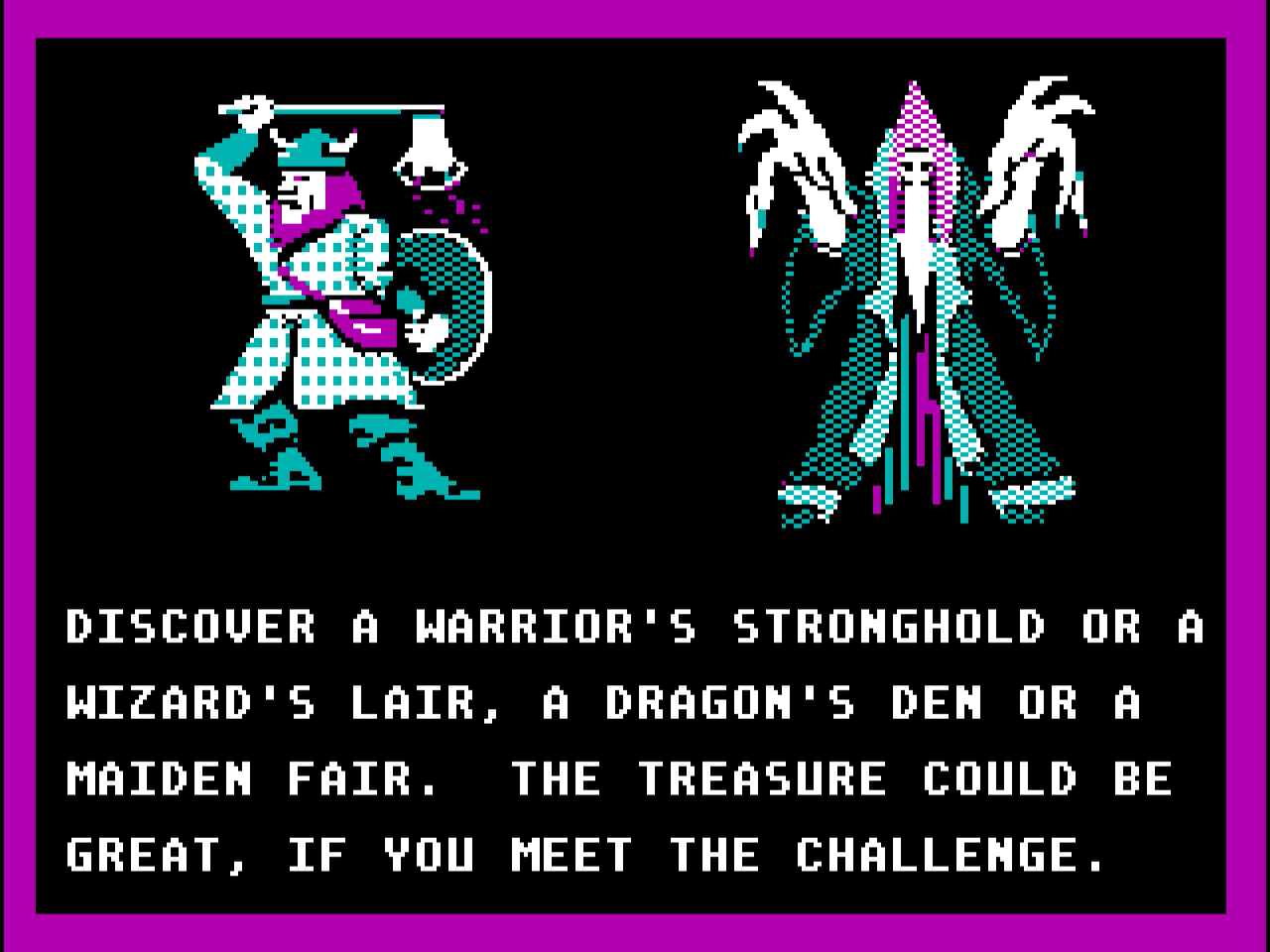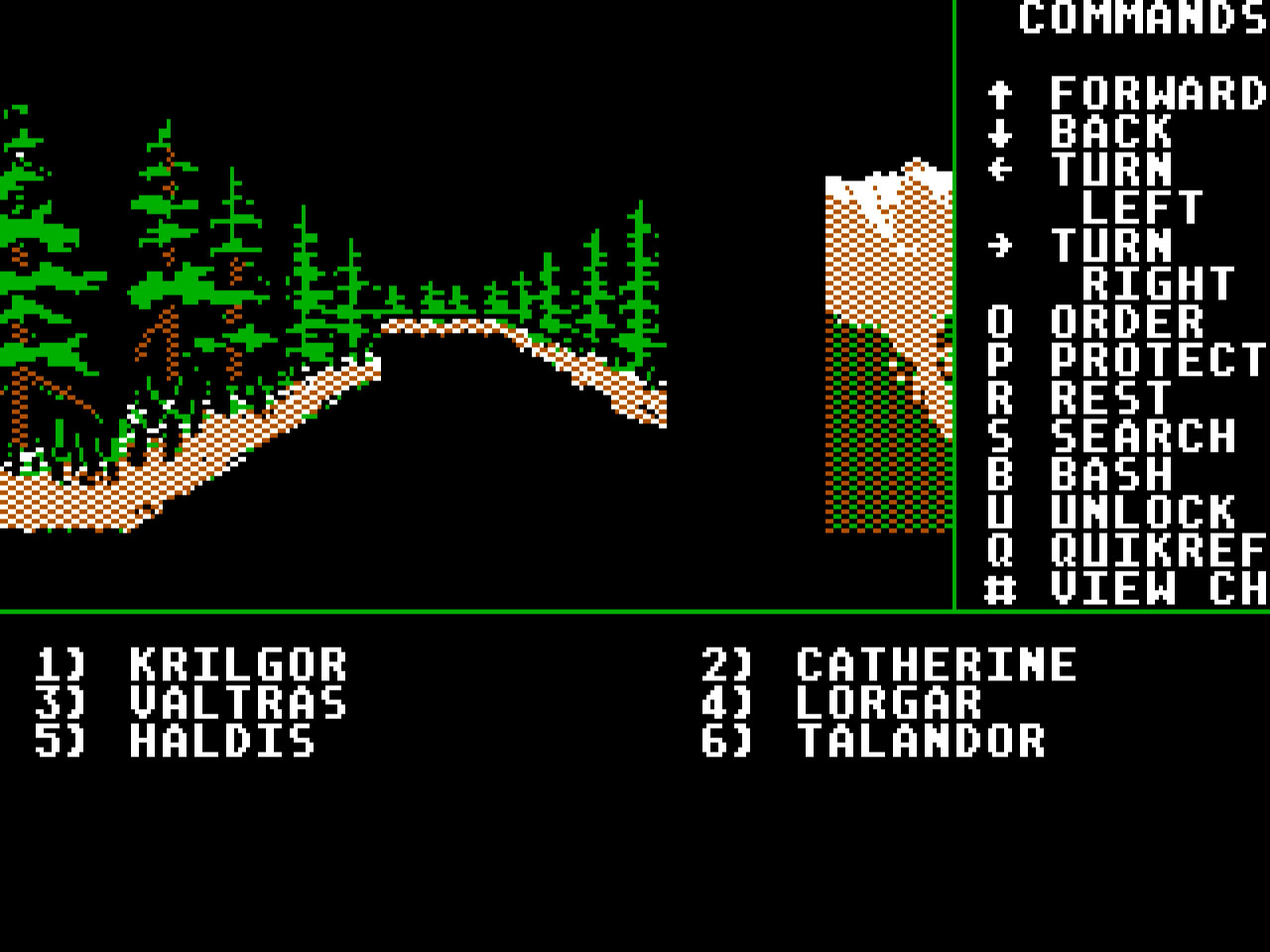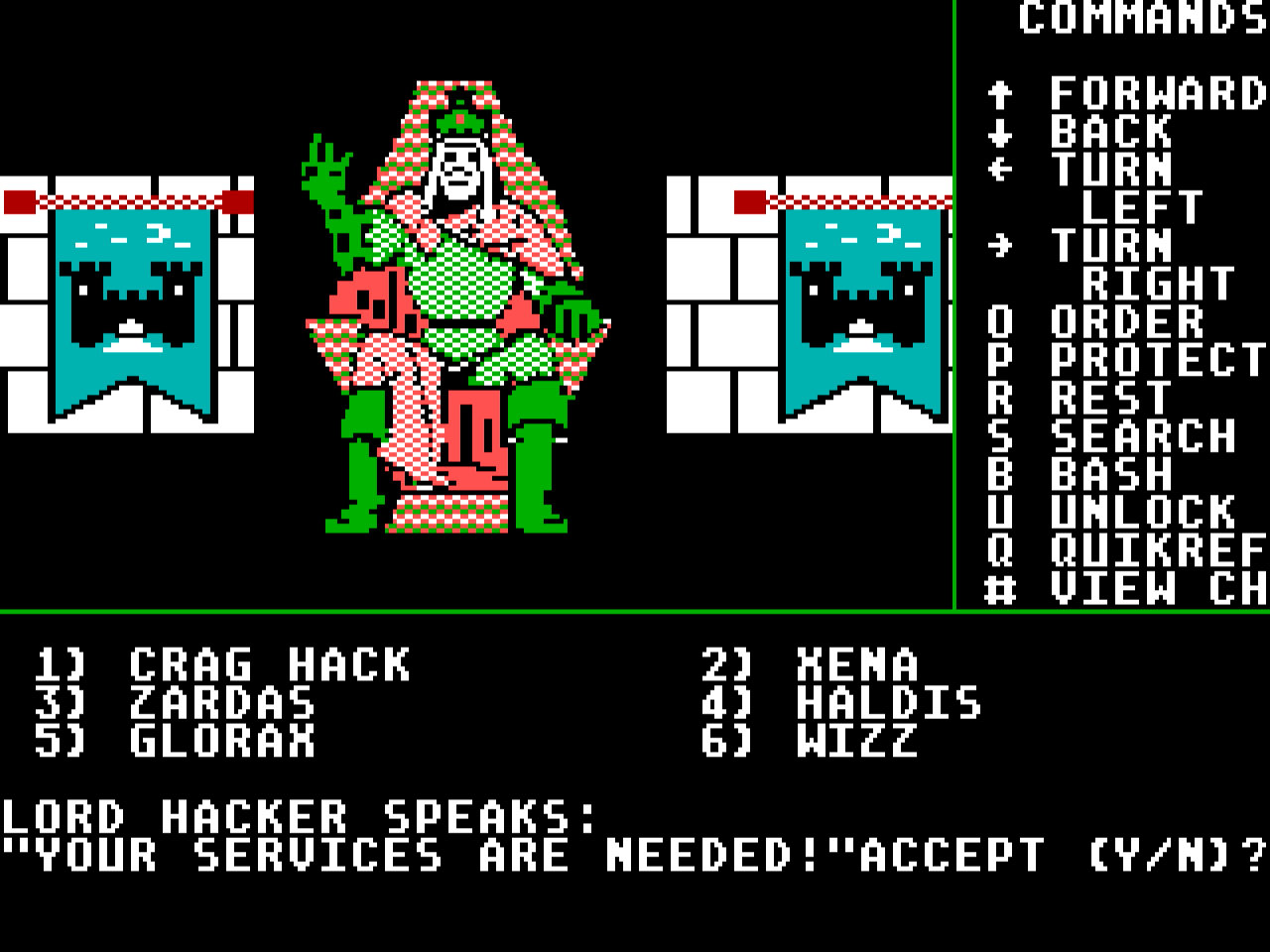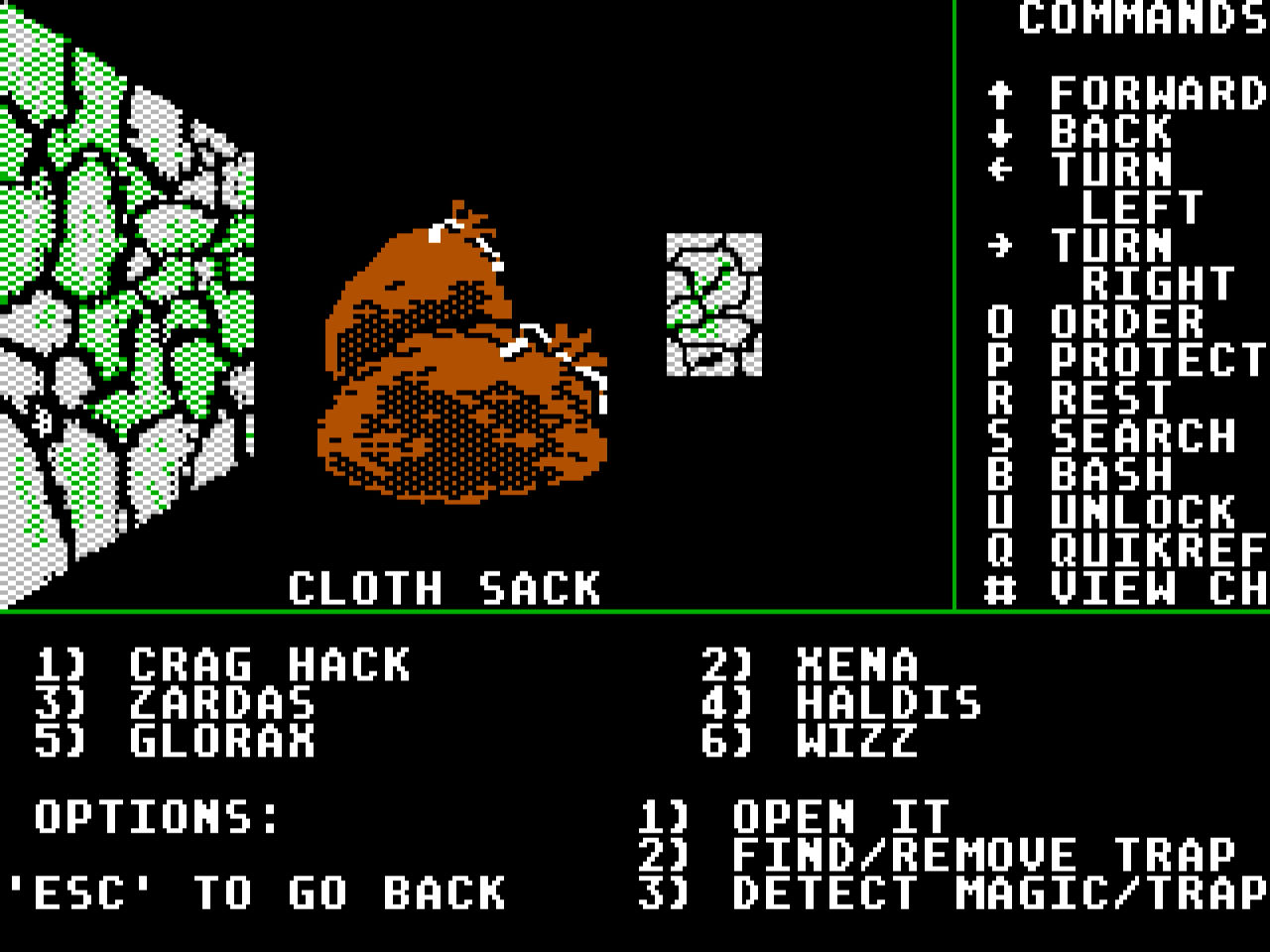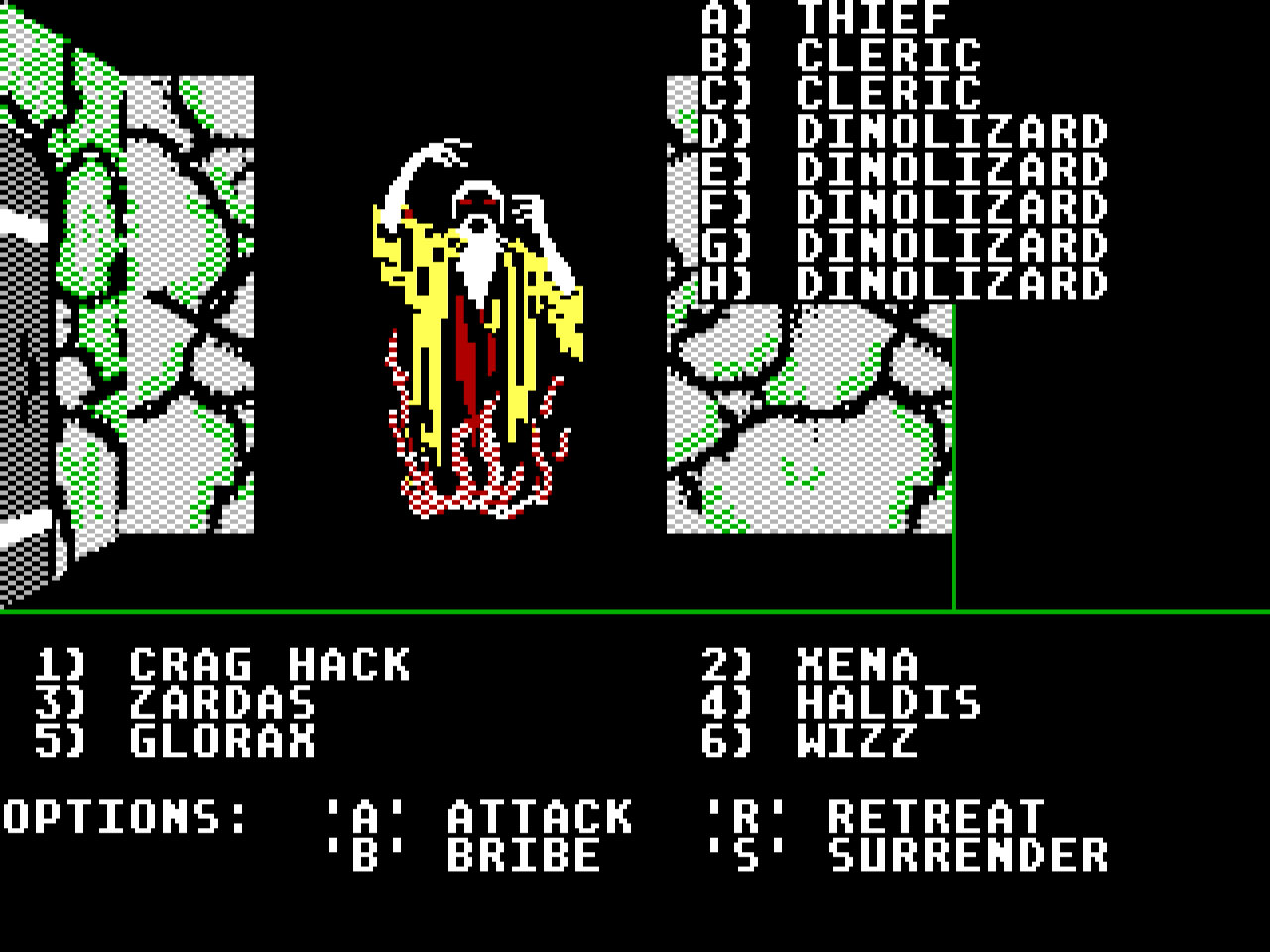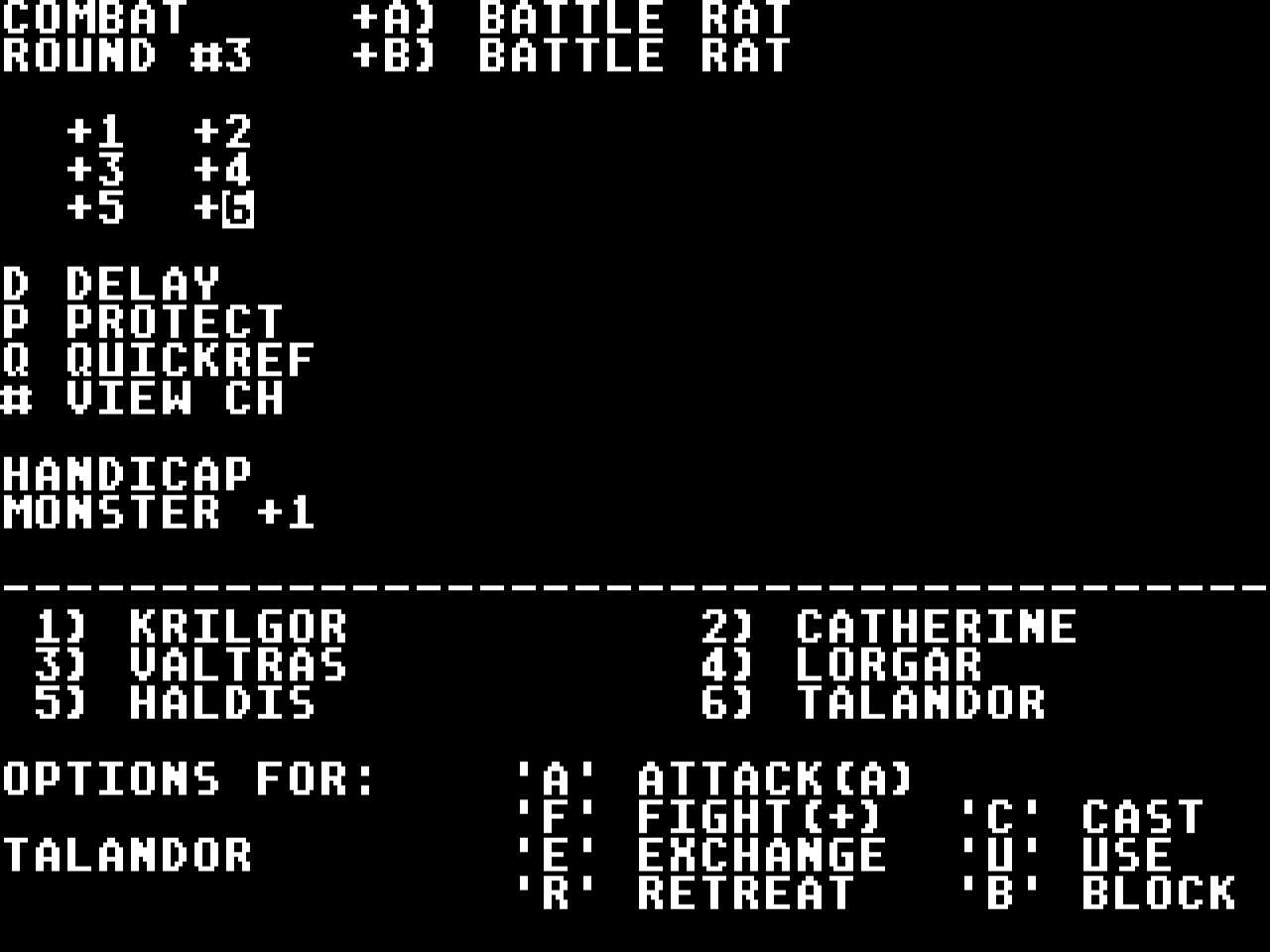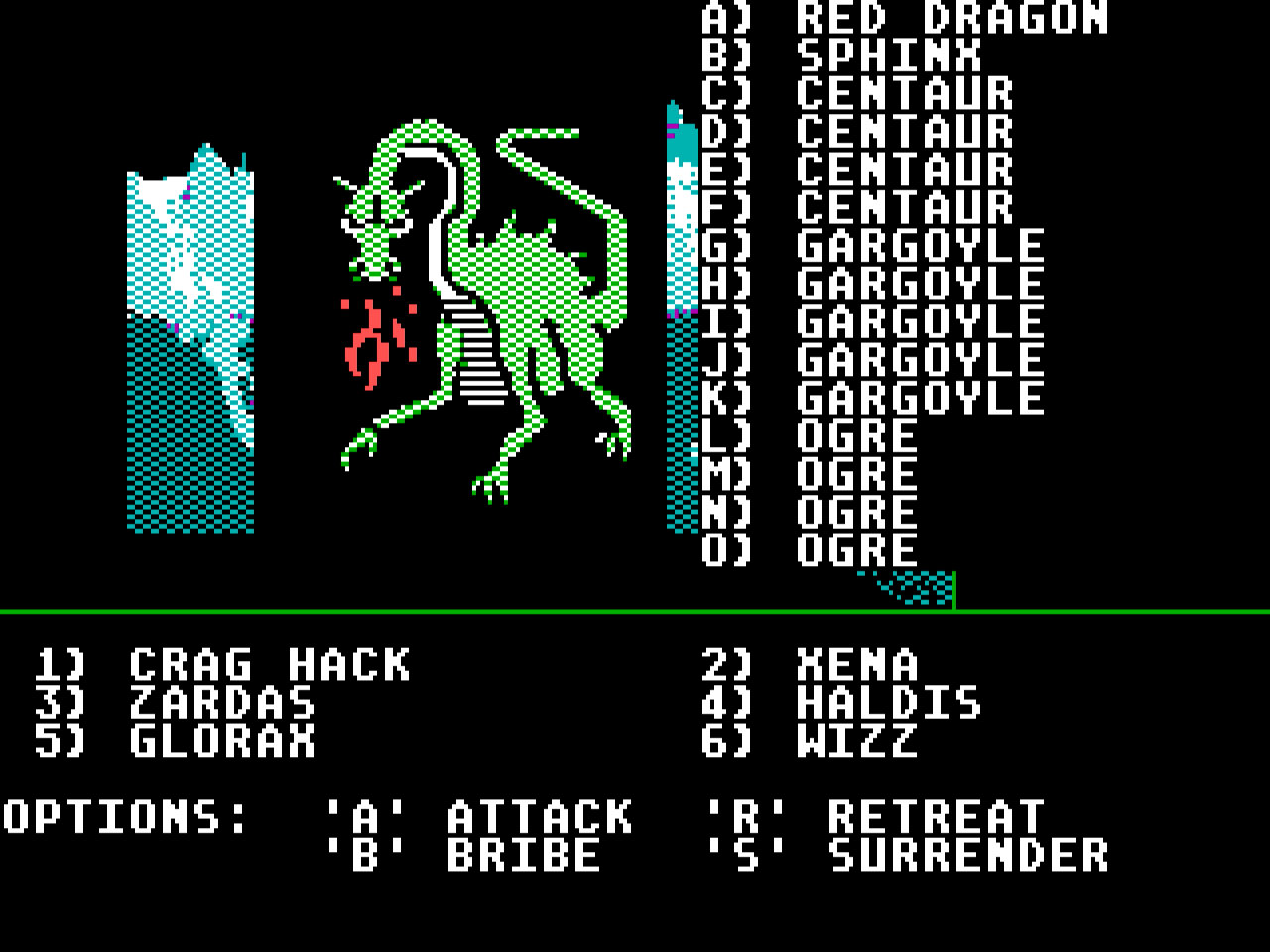Might and Magic
Let's take a step back into simpler times. When nobody knew about fancy graphics, and games were really difficult to complete. Games did not distinguish between main and side quests, you really had to explore everything if you wanted to truly progress. Starting a new game meant that you had to expect death from every three out of four encounters. On second thought, it does not really seem like simpler times? Looking back, it seems like games were a lot more frustrating. Perhaps I should not have such fond memories from those days, yet I still do. So let's take a good and proper look at an old gem and dissect the gameplay to figure out just how good it is. Let's delve deep into the very first game in the classic Might and Magic series.
Might and Magic Book 1: The Secret of the Inner Sanctum. Developed by New World Computing and released in 1986.
We can already see from the title that more games were planned. And already we know that our quest in this game is to uncover some secret regarding an inner sanctum. When you first start the game, you have the option to create new characters or make use of the already existing ones. Characters can belong to one of six classes: Knight, Paladin, Archer, Cleric, Sorcerer, Robber. You also have several races to choose from: Human, Elf, Dwarf, Gnome, Half-orc. The different races affect your attributes differently. Lastly there is also the option of gender, either Male or Female. This choice is not of big importance, but there are a few effects in the game that do differentiate between gender. In total, your party of adventurers consists of six characters, so you can have one of each class. Some classes have access to magic, while others are purely focused on Might.
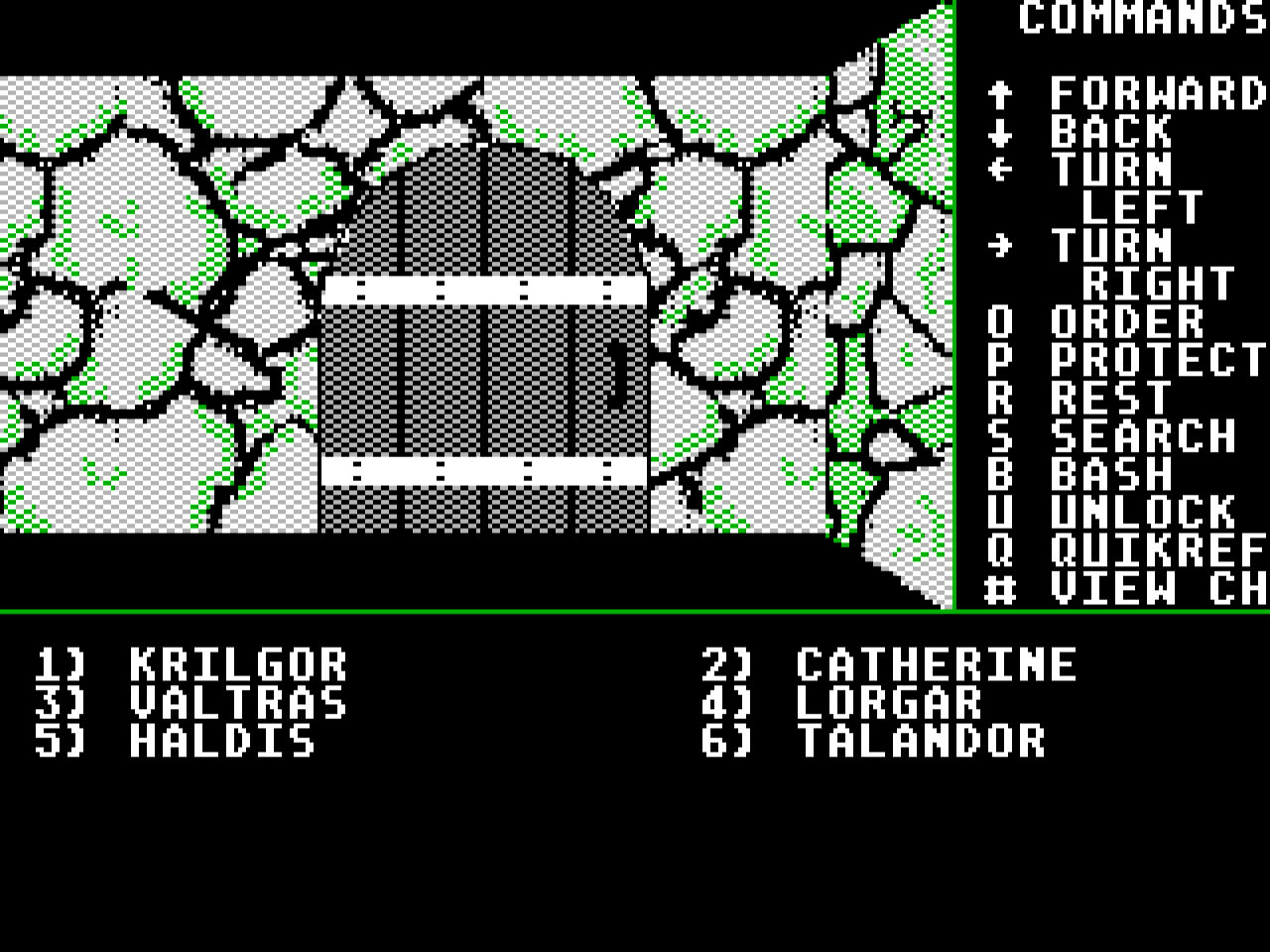 After you have selected your party, you start out in the city of Sorpigal. There is no introdution, no instructions or hint regarding what you should do. You don't even have a map over how the city looks, so you really just need to start exploring the area, while drawing a map as you go. Each area in the game consists of 16 by 16 squares. You can only move in four directions, north, east, west or south. The graphics are very basic, you don't know if there is something of interest in the area in front of you unless you actually step forward into the area. You do see certain basic stuff like walls and doors. However, the exit out of towns just look like a regular wall, you need to actually step towards the wall to be notified that there is an exit there. This also goes for stairways into dungeons, you can't see it unless you are standing right on top of it. When you are exploring the land itself, cities and castles do not show up either, you will only be notifed of them when you step into the space they occupy. So you may wonder how on earth you can explore this world. It's quite simple, you use graph paper and explore every single square. Or you could do what I do, make use of existing maps and hints found online. If you got the game from GOG, then it also comes with a cluebook which includes maps of all game areas.
After you have selected your party, you start out in the city of Sorpigal. There is no introdution, no instructions or hint regarding what you should do. You don't even have a map over how the city looks, so you really just need to start exploring the area, while drawing a map as you go. Each area in the game consists of 16 by 16 squares. You can only move in four directions, north, east, west or south. The graphics are very basic, you don't know if there is something of interest in the area in front of you unless you actually step forward into the area. You do see certain basic stuff like walls and doors. However, the exit out of towns just look like a regular wall, you need to actually step towards the wall to be notified that there is an exit there. This also goes for stairways into dungeons, you can't see it unless you are standing right on top of it. When you are exploring the land itself, cities and castles do not show up either, you will only be notifed of them when you step into the space they occupy. So you may wonder how on earth you can explore this world. It's quite simple, you use graph paper and explore every single square. Or you could do what I do, make use of existing maps and hints found online. If you got the game from GOG, then it also comes with a cluebook which includes maps of all game areas.
And that is really how to play the game, you need to meticulously explore each area. As you explore, you will encounter enemies. These will not appear until you enter the square with the enemies. Most encounters are random, but some will always appear the first time you enter certain squares. Even inside the town where you start are there random enemy encounters. So nowhere is safe in this game. In the beginning of the game, even the first encounters can prove deadly, so it makes for a slow and difficult start. The only way to save your progress is to enter the town inn and sign in. This will save your characters' state. While you are out exploring, there is no way to save. Obviously, it is always a good idea to have a plan ready before you head out, and return and save whenever you have accomplished something.
Because of the generic look of everything in the game, it is extremely difficult to navigate without the use of maps. There is even a spell available that will tell you your current grid location and facing, in case you lose your bearings. Thankfully, as you level up, you will gain access to some very useful spells that makes it easier to explore. When your cleric reaches level 7, you gain access to the surface
spell. If you cast this within a dungeon or town, it will teleport your party to the outside world to the entrance square for the town or dungeon. This works even if you are several levels underground. However, the most useful of all of these spells is the fly
spell. This spell can only be cast outside, but when cast it will ask you for cooridnates for the world map. The game world is divided into 20 areas, not including inside areas like towns and dungeons. With the fly spell, you can instantly travel to any of these areas.
Let's have a closer look at the game mechanics. Starting with your characters, they have attributes which primarily determine combat abilities, as well as how many hit points and spell points you get when you level up. These attributes, Strength, Intelligence, Personality, Agility, Endurance, Speed, Luck, do not improve with new levels, so anything that can raise them during the game is extremely valuable. Apart from these attributes, you only have Hit points and Spell points. Both of these will increase with each level, although only spellcasting classes has Spell points. Because of these mechanics, there really is little to think about when leveling up, your characters will automatically be slightly more durable in battle. Spellcasters will on certain levels unlock a new spell level, along with all spells of that level.
This brings us to spellcasting. The primary spellcasting classes are the Cleric and Sorcerer, both have access to their own unique spells. The Paladin and Archer also gain access to Cleric and Sorcerer spells respectively, when they become high enough level. Casting spells might be a bit confusing at first. You press 'C' to cast spells, which will them prompt you for the spell level, and then the spell number. In other words, you need to reference the game manual when you want to cast spells. Certain spells that you cast frequently should eventually be easy to remember, but you still need the manual to look over less frequently used spells. To give an example, the Cleric spell "Cure Wounds" is the first level 2 spell. So to cast it, you first make sure your cleric is selected. Then you press 'C' to cast spells, then you press '2' for spell level 2, and then '1', for the first spell.
Phew, all of this might make the game appear like quite a chore to play. But strangely enough, the opposite seems to be true. Personally, I just happen to find this game extremely satisfying. You might think that it would only be frustrating when compared to modern games, but to me it is refreshing and uplifting. I originally thought it would be a bit tedious at times, but it requires concentration, which takes away any tediousness. Instead I actually feel more immersed than many modern games, simply because the game demands my attention. When you manage to survive long enough to reach higher levels with your characters, it is an amazingly rewarding experience. All you need is the patience required to learn the game basics.
Then what about combat? Combat in this game is turn based. Your characters and the enemies you fight, will each have their turn to perform an action. There is no graphical representation of what is going on. You will only see the names of your characters listed, with numbers next to them, and your enemies, with letters next to them. The '+' symbol will appear next to any character that is engaged in hand-to-hand combat. Only these character can perform attack actions. Characters equipped with ranged weapons can shoot at enemies. Spellcasters also have the option to cast spells. You can't actually see the status of your characters in the main combat screen, you need to either inspect your characters individually, or use the Quick-reference, which lists hit points and spell points for all your characters. After winning combat, it is important to hit 'S' to actually search for loot, otherwise you might miss some cool items.
Game story
Since I intend to eventually cover all games that are part of the original Might and Magic continuity (essentially all games developed by NWC), I also want to go into the evolving story of these games. It goes without saying that there will be spoilers here.
For this game, the very first entry in the series, there is not that much of a plot. Exploring the land, you will perform quests for the lord of the land. There is also the king, Alamar, who gives you a quest that you will enver be able to solve. In the land you will also encounter an crashed metallic craft and some aliens. If you are friendly towards the aliens, they will warn you that their prisoner has escaped and may be masquerading as a noble. somehwere in the land of Varn. You will discover that King Alamar is actually an impostor. The real king has been imprisoned, and a being by the name of Sheltem has been masquerading as the king. Sheltem will escape and trap you in the Soul maze. After escaping, you will need to travel to the Astral plane. Here you will encounter a Data Keeper who commends your party for their accomplishments and suggests that you will get to transfer to another V.A.R.N. Vehicular Astropod Research Nacelle. In other words, the game world is an artificial vessel.
After escaping from the Astral plane, your party travels to the Gates to Another World. The tale continues in Might and Magic II: Gates to Another World.
This is obviously not a very complicated game story, but for such an old game it is still impressive. Piecing together the story as you play might be a little complicated as it usually comes in the form of very brief conversations or other hints found.
Conclusion
This game is obviously not on par with most modern games. A lot of people would probably discard this game after only a quick look at the graphics (or lack thereof). Indeed, the first half hour of trying to play this game was slightly frustrating because I had to keep referencing the manual to understand what was going on. However, once I got the hang of it, I was hooked. There were some parts where all I did was simply grind fights to gain experience, but overall the game felt intriguing. It could just be that I am able to easliy lose myself in a world of fiction, but I kept coming back to this game, wanting to simply explore and continually improve my characters.
I have played a lot of modern rpg's, and I will actually rate this game higher than some modern games. Since this game didn't have fancy graphics, or even the most intriguing story, it instead focuses on good gameplay. And it is my opinion that this game really nailed the gameplay. It feels rewarding to play this game, and that is exactly what good gameplay should feel like.
But in the end, I have to admit that this is not an accessible game to most people. I can honestly recommend it to anyone interested in trying out a game that is very unusual by modern standards. But I can also fully understand that a lot of people would not be interested in a game this old. Still, it's an interesting game, and it is very fun to have a little look at the first game in the Might and Magic series.
Next up is Might and Magic II
Categories: Role Playing Games, Might and Magic, Turn Based, Science Fiction, Fantasy
You need to Log in to comment.
If you don't have an account, then feel free to Create an account
